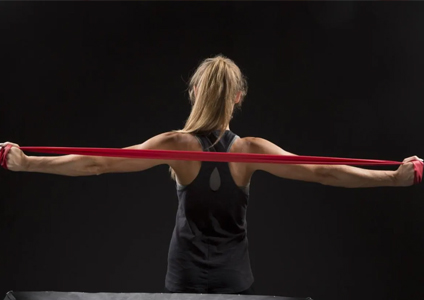
Spring Time Gardening and Yard Work Related Injuries
May 12, 2025The Importance of Transverse Plane Training for Police, Firefighters, and First Responders
First responders including police officers, firefighters, and emergency medical personnel regularly face high-stakes situations that demand quick, reactive, and often rotational movement. Incorporating rotational movement around the body’s vertical axis, is essential to prepare for these dynamic physical challenges. Training in the transverse plane is critically important for police officers and firefighters and first responders due to the dynamic, unpredictable, and rotational nature of the physical demands in their work.
What Is the Transverse Plane?
The transverse plane divides the body into upper and lower halves and governs rotational movements, such as turning the head or torso, twisting at the waist, pivoting on one foot and reaching across the body or behind. These are movements often overlooked in traditional training but are crucial in tactical, rescue, and emergency scenarios.
Why It Matters for Firefighters
Firefighters must frequently move in tight, unpredictable environments. Transverse movements are essential for dragging unconscious victims, swinging tools like axes or Halligans, crawling through tight spaces, and with turning while carrying equipment, such as hoses or air tanks. Said tasks require rotational mobility and rotational power.
Why It Matters for Police Officers
Police officers encounter situations that demand quick changes in direction, restraint techniques, and defensive tactics. Transverse plane training helps with defensive tactics and weapon retention, foot pursuits and takedowns, getting in and out of vehicles rapidly and with general situational awareness. All of these require core rotational stability and quick torso, hip and head movement along with twisting and pivoting.
Why It Matters for EMS/Paramedics
EMS professionals frequently lift and move patients in awkward positions. Transverse training supports transferring patients from stretchers to beds, reaching across bodies or around obstacles in confined spaces, and preventing back injuries, especially from lifting or twisting while carrying medical gear.
Key Benefits of Transverse Plane Training
Injury Prevention –> Reduces risk of strains and sprains in the lower back, hips, and shoulders.
Functional Strength –> Develops real-world strength for dynamic and rotational tasks.
Improved Mobility & Agility –>Enhances ability to pivot, turn, and move freely in complex environments.
Enhanced Performance –> Supports powerful movements such as strikes, swings, or lifts from awkward angles.
Core Stability –> Strengthens deep core muscles crucial for balance, posture, and injury resilience.
Effective Transverse Plane Exercises
- Medicine ball rotational slams or throws
- Cable or band torso rotations
- Landmine rotational presses
- Russian twists with resistance
- Rotational lunges or step-throughs
- Agility ladder drills with lateral and rotational components
- Partner resistance rotation drills (e.g., resisting a twist or push)
Conclusion
For first responders, movement rarely occurs in straight lines. Real-life emergencies demand rotational strength, core control, and the ability to react in all planes of motion, especially the transverse plane. Incorporating transverse plane training improves operational performance, reduces injury risk, and builds resilience under pressure. Investing in this often-overlooked area of training is not just smart, but essential for safety, effectiveness, and longevity in the field.





